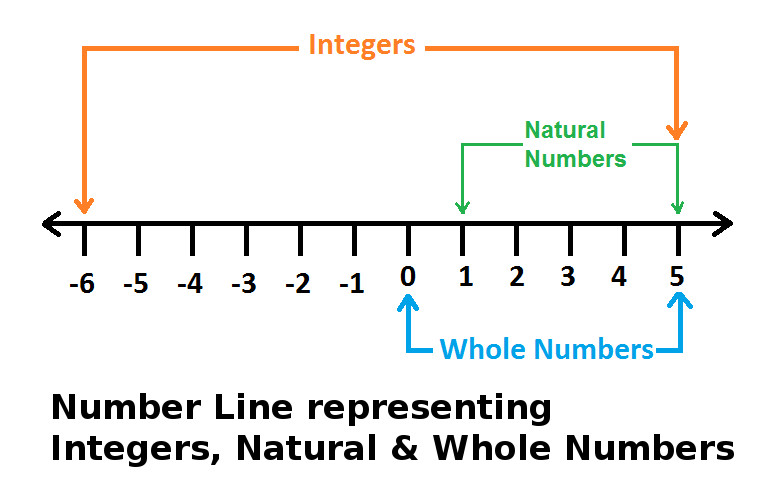Before you study the difference between integers, whole numbers and natural numbers you are advised to read:
What are Whole Numbers ?
What are Natural Numbers ?
What are Integers ?
The numbers 1, 2, 3, 4, 5,.... and so on..... all are called Natural Numbers .
The numbers 0, 1, 2, 3, 4, 5,.... and so on..... all are called Whole Numbers .
And the numbers -5, -4, -3, -2, -1, 0, 1, 2, 3, 4, 5,.... and so on.....all are known as Integers .
Or we can also say that:
If digit Zero is included in the series of Natural Numbers, it becomes Whole Numbers. And the collection of Whole Numbers and Negative Numbers is known as Integers.
Let's understand this with the help of following Number Line:

|






